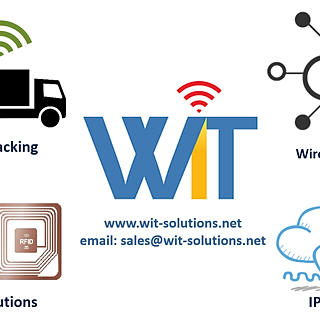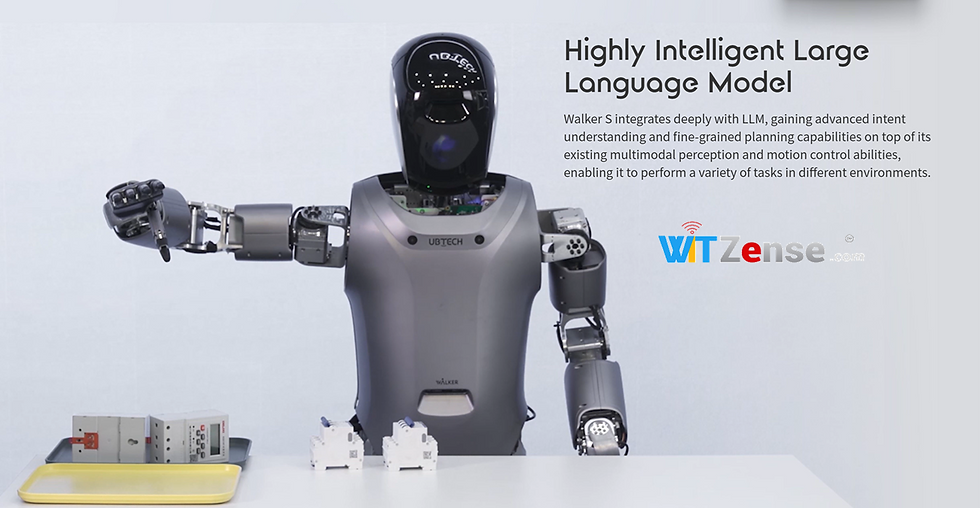How Algorithms Like ORB, SIFT, and SURF Help Robots See the World?
- wit-tech
- Jul 27
- 3 min read

In today’s era of autonomous machines—self-driving cars, drones, and service robots—visual perception is a key component. For a robot to function independently in a complex environment, it must not only see but understand what it sees. This is where feature detection and matching algorithms like ORB, SIFT, and SURF come into play.
These algorithms extract and recognize visual features in images, helping robots localize themselves, build maps, and interact with their surroundings. Let’s break down how they work—and why they’re so important.
🧠 What Are Visual Features?
Before diving into the algorithms, it’s important to understand what we mean by “features.”
A feature in computer vision is a distinctive point or pattern in an image—like corners, edges, or blobs—that’s easy to detect and match across different images. Good features are:
Unique (not easily confused with others)
Repeatable (appear similarly in different views or lighting)
Efficient to detect and describe
These features act like landmarks in the robot’s visual world.
🔍 Key Algorithms: SIFT, SURF, and ORB
1. SIFT (Scale-Invariant Feature Transform)
Developed by: David Lowe (1999)
Strengths: Extremely robust to changes in scale, rotation, and lighting.
How it works:
Detects keypoints at different scales using Difference of Gaussians (DoG).
Assigns an orientation to each keypoint for rotation invariance.
Generates a 128-dimensional descriptor to describe the neighborhood of each keypoint.
🧠 Why it helps robots:SIFT allows robots to match visual features even if an object appears at a different angle or distance. Great for mapping and recognizing objects in varied conditions.
2. SURF (Speeded-Up Robust Features)
Developed by: Herbert Bay et al. (2006)
Strengths: Faster than SIFT with similar robustness.
How it works:
Uses integral images and Hessian matrix for fast keypoint detection.
Builds shorter descriptors (64-128 dimensions) with fast orientation assignment.
⚙️ Why robots use it:SURF is a performance-oriented alternative to SIFT. It helps in time-critical applications like real-time SLAM or obstacle detection on drones.
3. ORB (Oriented FAST and Rotated BRIEF)
Developed by: Ethan Rublee et al. (2011)
Strengths: Open-source, FAST, and efficient—ideal for embedded systems.
How it works:
Uses FAST corner detection for speed.
Computes descriptors using BRIEF, modified to be rotation-invariant.
Produces binary descriptors—extremely fast to match using Hamming distance.
⚡ Why ORB is a favorite in robotics:ORB strikes a balance between speed and performance, making it perfect for real-time applications like Visual SLAM on mobile robots or AR headsets.

🤖 How These Algorithms Enable Robot Vision
1. Localization & Mapping (SLAM)
Feature points are used to track motion between frames.
Matching points across time allows the robot to estimate its position and build a map of the environment.
2. Object Recognition
Robots can recognize objects by matching live camera input with stored features from known items (e.g., pick-and-place tasks in factories).
3. Navigation & Obstacle Avoidance
Robots identify distinctive features in their surroundings to navigate hallways, detect walls, or avoid furniture.
4. Visual Odometry
By comparing features between sequential frames, robots can measure how far they’ve moved—crucial for dead-reckoning when GPS is unavailable.
🧩 SIFT vs. SURF vs. ORB: Quick Comparison
Feature | SIFT | SURF | ORB |
Speed | Slow | Faster | Very Fast |
Invariance | Scale, Rotation, Illumination | Scale, Rotation | Rotation |
Descriptor Type | Float (128D) | Float (64/128D) | Binary |
Open Source | No (patented) | No (patented) | Yes (BSD license) |
Best For | Accuracy | Speed-Accuracy Balance | Real-Time Robotics |
🚀 Real-World Applications in Robotics
Drones use ORB or SIFT to recognize landing pads.
Autonomous cars use feature matching to detect landmarks in SLAM pipelines.
Warehouse robots detect QR codes and shelf markers using fast binary descriptors.
AR headsets use these algorithms to place virtual objects consistently in the real world.
🔮 The Future: Deep Learning vs Traditional Features?
While deep learning-based vision models are becoming dominant, traditional feature-based algorithms still excel in real-time, low-power, or GPS-denied environments. In fact, hybrid approaches are emerging—combining the precision of feature matching with the generalization power of neural networks.
In Summary
Feature detection algorithms like SIFT, SURF, and ORB are the unsung heroes of robotic vision. They give robots the ability to:
Recognize places and objects
Understand their motion through the world
Navigate and interact in real-time
While newer methods may come and go, these algorithms remain foundational tools in the visual toolbox of intelligent machines.







Comments